-
抗体試薬
- フローサイトメトリー用試薬
-
ウェスタンブロッティング抗体試薬
- イムノアッセイ試薬
-
シングルセル試薬
- BD® AbSeq Assay
- BD Rhapsody™ Accessory Kits
- BD® OMICS-One Immune Profiler Protein Panel
- BD® Single-Cell Multiplexing Kit
- BD Rhapsody™ TCR/BCR Next Multiomic Assays
- BD Rhapsody™ Targeted mRNA Kits
- BD Rhapsody™ Whole Transcriptome Analysis (WTA) Amplification Kit
- BD® OMICS-Guard Sample Preservation Buffer
- BD Rhapsody™ ATAC-Seq Assays
- BD® OMICS-One Protein Panels
-
細胞機能評価のための試薬
-
顕微鏡・イメージング用試薬
-
細胞調製・分離試薬
-
- BD® AbSeq Assay
- BD Rhapsody™ Accessory Kits
- BD® OMICS-One Immune Profiler Protein Panel
- BD® Single-Cell Multiplexing Kit
- BD Rhapsody™ TCR/BCR Next Multiomic Assays
- BD Rhapsody™ Targeted mRNA Kits
- BD Rhapsody™ Whole Transcriptome Analysis (WTA) Amplification Kit
- BD® OMICS-Guard Sample Preservation Buffer
- BD Rhapsody™ ATAC-Seq Assays
- BD® OMICS-One Protein Panels
- Japan (Japanese)
-
Change country/language
Old Browser
Looks like you're visiting us from United States.
Would you like to stay on the current country site or be switched to your country?
BD Pharmingen™ PE Mouse Anti-Human Chondroitin Sulfate (NG2)
クローン 7.1 (RUO)

Flow cytometric analysis of Chondroitin Sulfate (NG2) expression on Human M21 cells. Cells from the Human M21 (Melanoma) cell line were preincubated with Human BD Fc Block™ (Cat. No. 564219/564220) and stained with either PE Mouse IgG1, κ Isotype Control (Cat. No. 554680; dotted line histograms) or PE Mouse Anti-Chondroitin Sulfate (NG2) antibody (Cat. No. 569962/569963; solid line histogram) at 0.125 µg/test. DAPI (4',6-Diamidino-2-Phenylindole, Dihydrochloride) Solution (Cat. No. 564907) was added to cells right before analysis. The fluorescence histogram showing Chondroitin Sulfate (NG2) expression (or Ig Isotype control staining) was derived from gated events with the forward and side light-scatter characteristics of viable (DAPI-negative) cells. Flow cytometry and data analysis were performed using a BD Celesta™ Cell Analyzer System and FlowJo™ software. Data shown on this Technical Data Sheet are not lot specific.

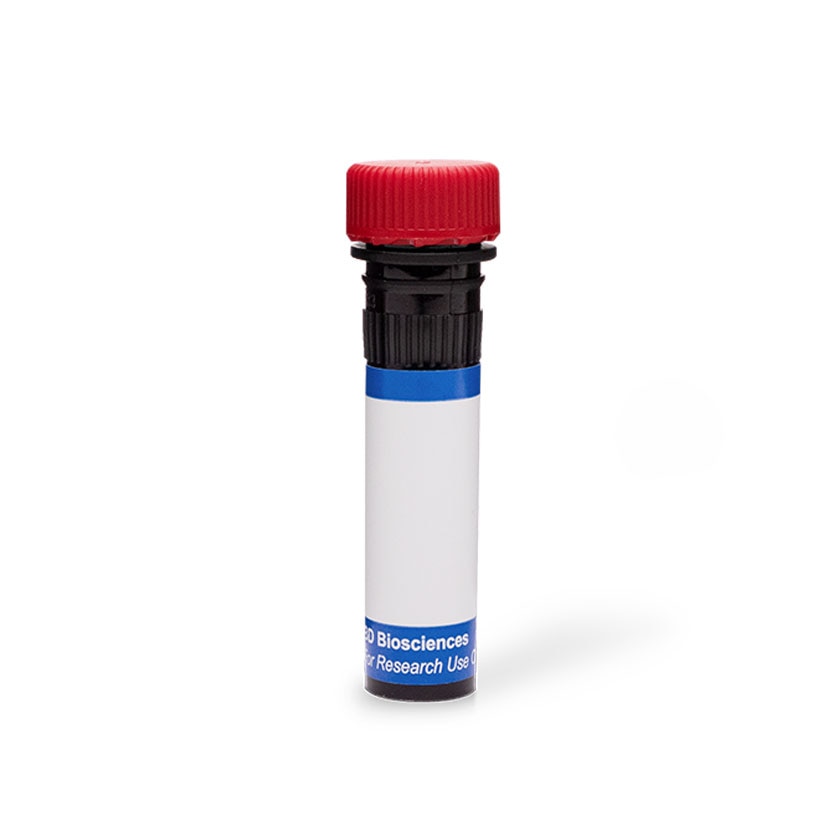
Flow cytometric analysis of Chondroitin Sulfate (NG2) expression on Human M21 cells. Cells from the Human M21 (Melanoma) cell line were preincubated with Human BD Fc Block™ (Cat. No. 564219/564220) and stained with either PE Mouse IgG1, κ Isotype Control (Cat. No. 554680; dotted line histograms) or PE Mouse Anti-Chondroitin Sulfate (NG2) antibody (Cat. No. 569962/569963; solid line histogram) at 0.125 µg/test. DAPI (4',6-Diamidino-2-Phenylindole, Dihydrochloride) Solution (Cat. No. 564907) was added to cells right before analysis. The fluorescence histogram showing Chondroitin Sulfate (NG2) expression (or Ig Isotype control staining) was derived from gated events with the forward and side light-scatter characteristics of viable (DAPI-negative) cells. Flow cytometry and data analysis were performed using a BD Celesta™ Cell Analyzer System and FlowJo™ software. Data shown on this Technical Data Sheet are not lot specific.

Flow cytometric analysis of Chondroitin Sulfate (NG2) expression on Human M21 cells. Cells from the Human M21 (Melanoma) cell line were preincubated with Human BD Fc Block™ (Cat. No. 564219/564220) and stained with either PE Mouse IgG1, κ Isotype Control (Cat. No. 554680; dotted line histograms) or PE Mouse Anti-Chondroitin Sulfate (NG2) antibody (Cat. No. 569962/569963; solid line histogram) at 0.125 µg/test. DAPI (4',6-Diamidino-2-Phenylindole, Dihydrochloride) Solution (Cat. No. 564907) was added to cells right before analysis. The fluorescence histogram showing Chondroitin Sulfate (NG2) expression (or Ig Isotype control staining) was derived from gated events with the forward and side light-scatter characteristics of viable (DAPI-negative) cells. Flow cytometry and data analysis were performed using a BD Celesta™ Cell Analyzer System and FlowJo™ software. Data shown on this Technical Data Sheet are not lot specific.


BD Pharmingen™ PE Mouse Anti-Human Chondroitin Sulfate (NG2)

Regulatory Statusの凡例
Any use of products other than the permitted use without the express written authorization of Becton, Dickinson and Company is strictly prohibited.
Preparation and Storage
推奨アッセイ手順
BD® CompBeads can be used as surrogates to assess fluorescence spillover (compensation). When fluorochrome conjugated antibodies are bound to BD® CompBeads, they have spectral properties very similar to cells. However, for some fluorochromes there can be small differences in spectral emissions compared to cells, resulting in spillover values that differ when compared to biological controls. It is strongly recommended that when using a reagent for the first time, users compare the spillover on cell and BD® CompBeads to ensure that BD® CompBeads are appropriate for your specific cellular application.
Product Notices
- Since applications vary, each investigator should titrate the reagent to obtain optimal results.
- Please refer to www.bdbiosciences.com/us/s/resources for technical protocols.
- Caution: Sodium azide yields highly toxic hydrazoic acid under acidic conditions. Dilute azide compounds in running water before discarding to avoid accumulation of potentially explosive deposits in plumbing.
- For fluorochrome spectra and suitable instrument settings, please refer to our Multicolor Flow Cytometry web page at www.bdbiosciences.com/colors.
- Please refer to http://regdocs.bd.com to access safety data sheets (SDS).
- For U.S. patents that may apply, see bd.com/patents.
- An isotype control should be used at the same concentration as the antibody of interest.
関連製品
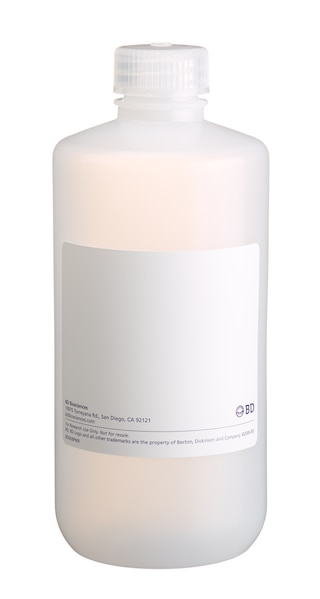
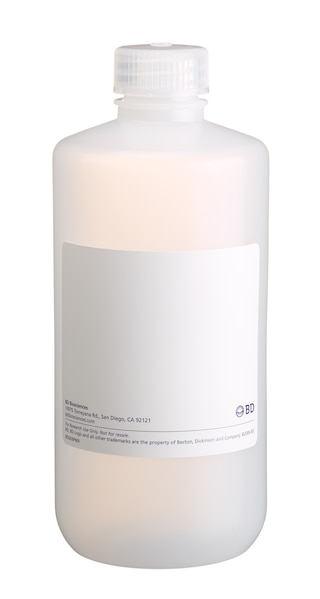
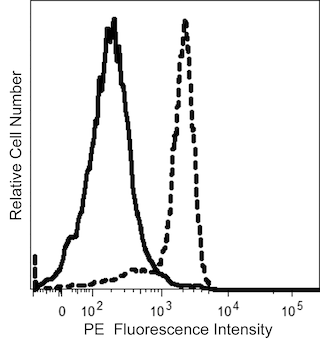
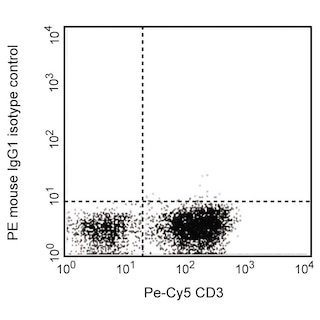

The 7.1 monoclonal antibody specifically recognizes Neural/Glial Antigen 2 (NG2) which is also known as Melanoma chondroitin sulfate proteoglycan (MCSP) and High molecular weight-melanoma associated antigen (HMW-MAA). This ~251 kDa transmembrane proteoglycan is encoded by CSPG4 (Chondroitin sulfate proteoglycan 4). Chondroitin Sulfate (NG2) is expressed by glial cells but not detected on normal marrow hematopoietic and peripheral blood cells. It is highly expressed by cells in some cancers including melanomas, leukemias, sarcomas and carcinomas. Chondroitin Sulfate (NG2) plays important roles in cellular proliferation, migration, and in oncogenic pathways involved in malignant transformation and metastases.

Development References (5)
-
Behm FG, Smith FO, Raimondi SC, Pui CH, Bernstein ID. Human homologue of the rat chondroitin sulfate proteoglycan, NG2, detected by monoclonal antibody 7.1, identifies childhood acute lymphoblastic leukemias with t(4;11)(q21;q23) or t(11;19)(q23;p13) and MLL gene rearrangements.. Blood. 1996; 87(3):1134-9. (Immunogen: Flow cytometry). View Reference
-
Luo W, Wang X, Kageshita T, Wakasugi S, Karpf AR, Ferrone S. Regulation of high molecular weight-melanoma associated antigen (HMW-MAA) gene expression by promoter DNA methylation in human melanoma cells.. Oncogene. 2006; 25(20):2873-84. (Biology). View Reference
-
Pluschke G, Vanek M, Evans A, et al. Molecular cloning of a human melanoma-associated chondroitin sulfate proteoglycan. Proc Natl Acad Sci U S A. 1996; 93(18):9710-9715. (Biology). View Reference
-
Tamburini E, Dallatomasina A, Quartararo J, et al. Structural deciphering of the NG2/CSPG4 proteoglycan multifunctionality.. FASEB J. 2019; 33(3):3112-3128. (Biology). View Reference
-
Wang X, Wang Y, Yu L, et al. CSPG4 in cancer: multiple roles.. Curr Mol Med. 2010; 10(4):419-29. (Biology). View Reference
Please refer to Support Documents for Quality Certificates
Global - Refer to manufacturer's instructions for use and related User Manuals and Technical data sheets before using this products as described
Comparisons, where applicable, are made against older BD Technology, manual methods or are general performance claims. Comparisons are not made against non-BD technologies, unless otherwise noted.
For Research Use Only. Not for use in diagnostic or therapeutic procedures.